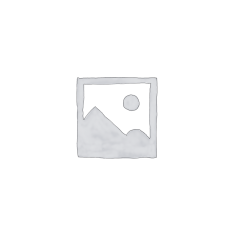Description
ABSTRACT
This project enhances the user’s music listening experience by not only adding but also synchronizing visuals to the music. The project digitally analyzes music being played back and controls LEDs to give an audio-visual experience. This report describes the materials and knowledge used to create a proof of concept for a portable music reactive LED lighting system.
TABLE OF CONTENTS
TITLE PAGE
APPROVAL PAGE
DEDICATION
ACKNOWLEDGEMENT
ABSTRACT
TABLE OF CONTENT
CHAPTER ONE
- INTRODUCTION
- BACKGROUND OF THE PROJECT
- PROBLEM STATEMENT
- AIM/ OBJECTIVE OF THE PROJECT
- SIGNIFICANCE OF THE PROJECT
- SCOPE OF THE PROJECT
CHAPTER TWO
LITERATURE REVIEW
2.1 conceptual review
2.2 THE CRITICAL REVIEW
2.3 EMPIRICAL REVIEW
2.4 REVIEW OF RELATED STUDIES
CHAPTER THREE
3.1 METHODOLOGY
3.2 MATERIAL CONSIDERATION
3.3 COUPLING AND CASING
CHAPTER FOUR
4.0 SYSTEM DESIGN AND IMPLEMENTATION
4.1 BUILDING / COUPLING PROCESS
4.2 CIRCUIT DIAGRAM
4.2.1 program code
4.3 CIRCUIT DESCRIPTION AND ANALYSIS
4.4 TESTING
CHAPTER FIVE
- SAFETY PRECAUTION, CONCLUSION AND RECOMMENDATION
- SAFETY PRECAUTION
- CONCLUSION
- RECOMMENDATION
REFERENCES
CHAPTER ONE
1.0 INTRODUCTION
1.1 BACKGROUND OF THE STUDY
Light up your new year parties and impress all your friends with these amazing music reactive multi color LED lights that response and change their colors on every loud beat. These lights are nothing but simple RGB LED strips connected to arduino – the brain of this project. LED strips mean that you can mount them anywhere in your home and even outdoors. The main purpose of this project was to use it in parties but you can also use it for daily purpose for making your music more interesting! Whether you mount in on your entrance door, around your sofa, your LED TV, on your computer desk or walls, that’s up to you. The uses of this thing are endless! The only condition is that you have to have an audio output device near your lights to feed them with audio signals which can be processed and reacted upon (Kluisenaar et al., 2019).
As told above, this project uses an arduino for taking the audio input, processing it and then giving an output through it’s digital pins to the LED strip controller circuit which then drives the strips. It uses a 12v power supply to power both the strip and arduino. An advantage of this project is that it doesn’t ‘waste’ any audio jacks. It has an input jack which sends the input signal to arduino and an output jack to send the same signal to your speakers or earphones.
A music-reactive LED circuit is a simple electronic circuit that responds to varying sound levels, usually, of the rhythmic melody from nearby playing music, and displays the changing intensity level of the sound signal in the form of blinking LEDs. It is a common circuit usually used for decorative purposes in places such as ceremonies, clubs & advertisements, etc.
The purpose of this project is to enhance the music experience with visual representation. In this Music Reactive LED Circuit, the LED lights would increase and decrease the lumen according to the music sensitivity, like if the music volume is high, then the lights would shine brightly, and if the music volume is low, then the lights would shine dimly. This circuit is very simple and easy to build, it just requires few essential components with some electronics concepts, and it looks very attractive
1.2 STATEMENT OF THE PROBLEM
In places such as club or parties, playing music alone for entertaining audience can be boring, but when lighting is involves it has a way of improving the atmosphere of the place. This project enhances the user’s music listening experience by not only adding but also synchronizing visuals to the music. This project uses an arduino for taking the audio input, processing it and then giving an output through it’s digital pins to the LED strip controller circuit which then drives the strips
1.3 AIM AND OBJECTIVES OF THE STUDY
The aim of this study is to build a music reactive LED circuit using arduino nano. The objectives of the study are:
- To build the system prototype
- To digitally analyzes music being played back and controls LEDs to give an audio-visual experience.
- TO describe materials and knowledge used to create a proof of concept for a portable music reactive LED lighting system.
- To make people feel much better and relaxed dancing and singing.
- To attract more attention of people in a club thereby making more money.
1.4 SIGNIFICANCE OF THE PROJECT
This device is very important and which is considered to be an art. Lights create a pleasant atmosphere along with good music, and the person who is on the dance floor becomes much happier.
An advantage of this project is that it doesn’t waste any audio jacks. It has an input jack which sends the input signal to arduino and an output jack to send the same signal to your speakers or earphones.
1.5 SCOPE OF THE STUDY
This project covers building a music reactive led circuit. It contains different colors of LED. The LEDs are light up based on the input audio to the microphone. So the LEDs are make light based on the music in the room.
CHAPTER FIVE
SAFETY PRECAUTION, CONCLUSION AND RECOMMENDATION
5.1 SAFETY PRECAUTION
The following safety measures should be observed:
- This device should be operated and maintained by a qualified personnel
- This circuit will also need a stable power supply for its operation, for this reason a regulated power supply is needed.
5.2 CONCLUSION
The design works rather well. According to the specifications and requirements that were set out, it only failed to meet one and subjectively meets two others. Because the goal of the project is to entertain, which makes the goal inherently subjective, it ultimately depends on the end user whether they like the results or not. Personally, the results are satisfactory given the nine weeks of time that was spent developing the project.
However, it should be noted that many improvements can still be made. The current system requires two separate parts working together: the client (board) and the server (PC). It would be ideal for the two parts to be in one comprehensive system. It depends on the specific application, but many use cases could benefit from the project being just one comprehensive system. The client part is also not currently one hundred percent reliable because of its indefinite runtime as discussed earlier. One caveat of this two part system is that it requires a shared network. However, nowadays wireless networks are widely available and even if one cannot be found, a typical smartphone can provide a personal hot spot as well.
Although not currently in use, there is some logic and ideas for a future implementation dealing with the average spectrum sound energy and the max spectrum sound energy. This would add more modes of visualization. The project could also benefit from having its own mobile app instead of using Blynk. If the system becomes one comprehensive system, it could be taken on-the-go to music festivals or friends’ houses without the need to install the signal processing program on a PC. The beat detection algorithm is currently rather basic too. Another improvement would be creating an algorithm that could adapt to different kinds of songs.
5.3 RECOMMENDATION
In realization of the project work, a lot of observations were made; this observation is what I am putting down as my recommendation:
- Such project work should be given to student on time to avoid rush and unnecessary pressure.
- This project is designed to be used in clubs, cinema, or any other entertainment centers, and should be used and maintain by a qualified personnel.
- In case of failure, I recommend that it should be troubleshot along with the circuit diagram.

